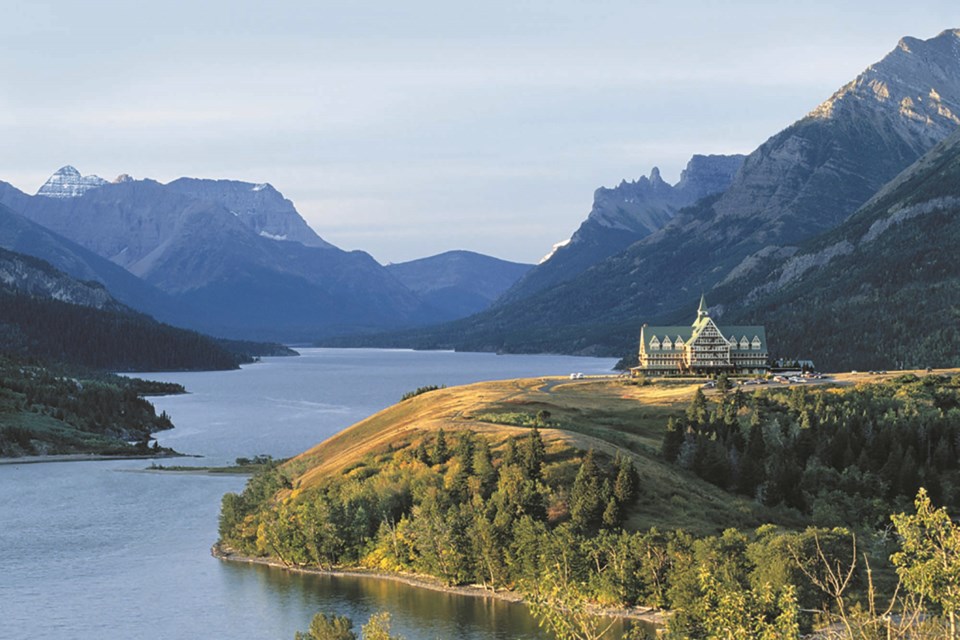UNESCO World Heritage Sites like East Africa's Serengeti, Egypt's Pyramids, and Australia's Great Barrier Reef may have to stay on your bucket list for at least another year, thanks to the outbreak of COVID-19. Lucky you live in Alberta.
As of July 2019, there are 1,121 World Heritage Sites. Twenty of them are in Canada, and six of those — the most of any province — are right here in Alberta.
"Through content Travel Alberta develops we talk about how diverse and lucky Alberta is to have six UNESCO sites," Marty Eberth, Travel Alberta's director of experience development, said.
She recommended visiting travelalberta.ca before heading out to see the sites for any COVID-19 updates.
The six sites are: the Canadian Rocky Mountain Parks; Dinosaur Provincial Park; Head-Smashed-in-Buffalo Jump; Waterton Glacier International Peace Park; Wood Buffalo National Park; and Writing-on-Stone Provincial Park.
"The Rocky Mountain Parks have the greatest number of travellers, in part, because of the scope of the region which includes, Banff, Jasper and bleeds into British Columbia as well," Eberth explained.
- Writing-on-Stone Provincial Park is the most recently designated World Heritage Site in Alberta, added July 2019. The park is located in the southeast corner of the province, 100 km southeast of Lethbridge and is one of the largest areas of protected prairie in the Alberta park system. It serves as a natural preserve and protection for many First Nations rock carvings and paintings dating back 9,000 years. The park contains the greatest concentration of rock art on the North American Gret Plains and is a sacred place to the Blackfoot and other aboriginal tribes.
- Dinosaur Provincial Park is Alberta's first UNESCO World Heritage Park, designated in 1979. The park is a two hour drive east of Calgary, located in the Red Deer River valley, noted for its Badlands and abundance of dinosaur fossils (58 dinosaur species have been discovered here) - one of the richest dinosaur fossil locales in the world. The park's visitor centre features exhibits about dinosaurs, fossils and the park's natural history, as well as a fossil prep lab.
- Head-Smashed-in-Buffalo Jump has been a World Heritage Site since 1981. It is located in southwest Alberta, 18 km west of Fort Macleod in the foothills of the Rockies. The buffalo jump was used by the indigenous people for 5,500 years to kill buffalo by driving them off an 11-metre (36-foot) high sandstone cliff. The site is also home to an interpretive centre and a museum dedicated to Blackfoot culture.
- Wood Buffalo National Park was designated a World Heritage Site in 1983. It is located in northeastern Alberta and is the largest national park in Canada at 44,807 km-squared, and the second largest national park in the world. It is home to the largest herd of free-ranging buffalo, estimated at about 5,000. It is also designated a Dark Sky Preserve that restricts artificial light pollution from nearby urban centres to better see the stars. The Aurora Borealis (Northern Lights) paints the sky green on clear nights.
- Canadian Rocky Mountain Parks is comprised of four national parks - Banff, Jasper, Kootenay and Yoho - and three British Columbia provincial parks - Hamber Provincial Park. Mount Assiniboine Provincial Park and Mount Robson Provincial Park. It's been a World Heritage Site since 1984 and contains mountains, glaciers, hot springs and the headwaters of major North American rivers including the North Saskatchewan, Athabasca, Columbia and Fraser.
- Waterton Glacier International Peace Park, a World Heritage Site since 1995, is the union of Waterton Lakes National Park in southwest Alberta and Glacier National Park in Montana. It is a Dark Sky Preserve with evening tours to guide you through the stars.
A heritage site is a landmark or area recognized as being of outstanding international importance and deserving of special protection by the United Nations Educational, Scientific and Cultural Organization (UNESCO).




